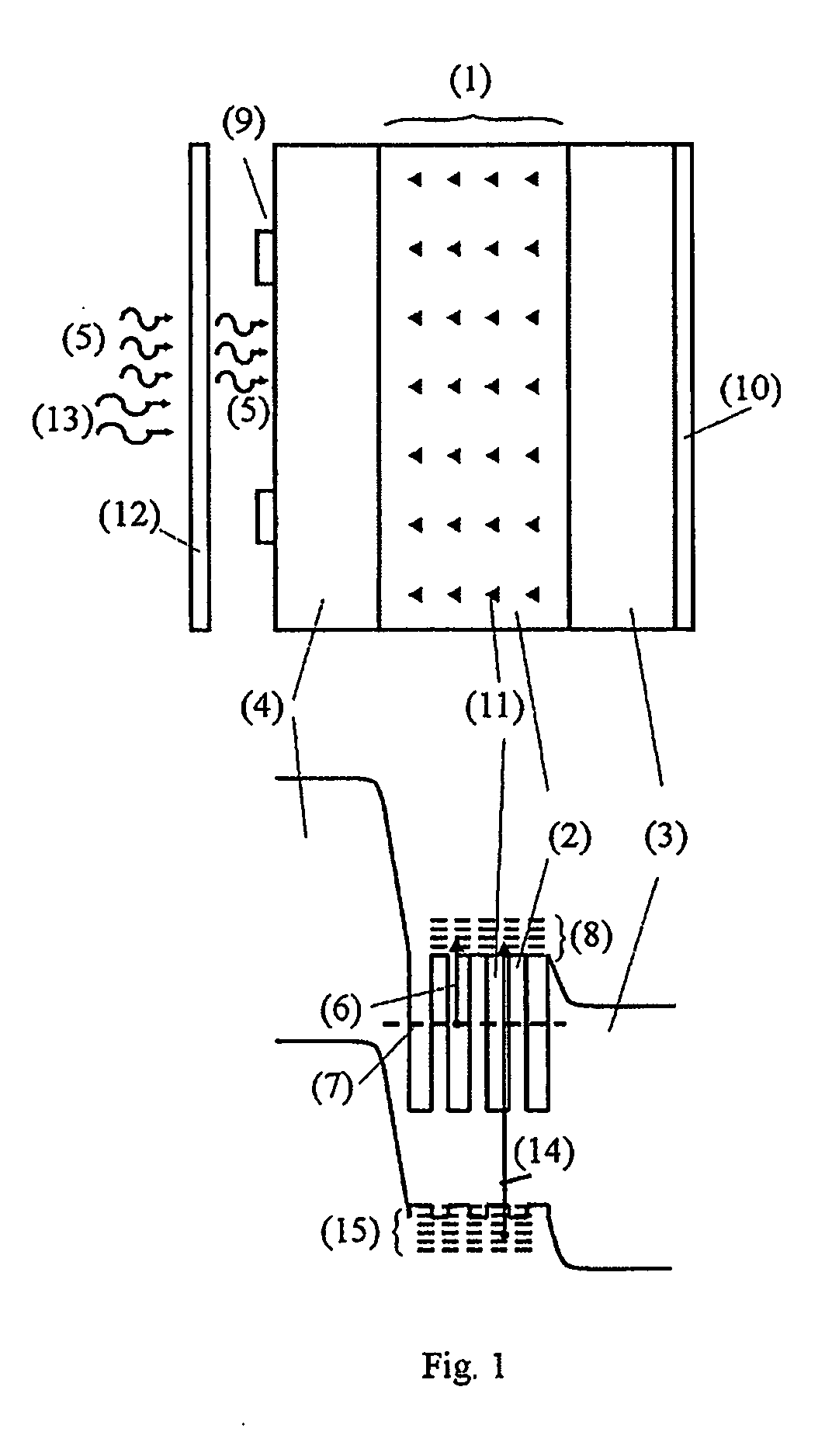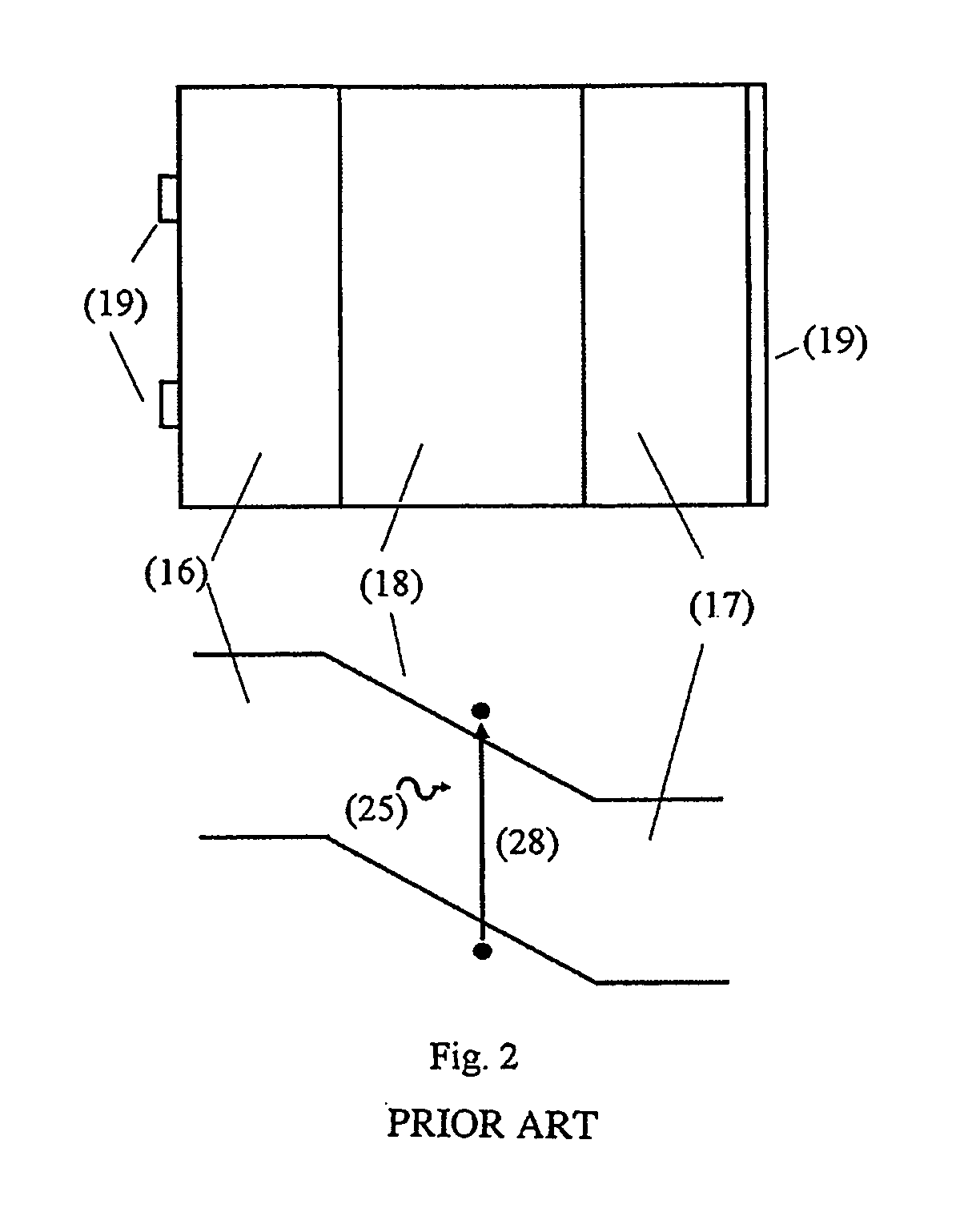Quantum dot intermediate band infrared photodetector
a quantum dot and infrared technology, applied in the field of infrared photodetectors, can solve the problems of reducing the detectivity (capability to distinguish signals from noise) of the photodetector, unable to absorb light at normal incidence, and unable to detect light in the photovoltaic mod
- Summary
- Abstract
- Description
- Claims
- Application Information
AI Technical Summary
Benefits of technology
Problems solved by technology
Method used
Image
Examples
Embodiment Construction
[0024] The invention is also referred to herein as “quantum dot intermediate band infrared photodetector” (QDIB-IR). FIG. 1 shows its basic structure. It comprises a semiconductor region (1) with quantum dots (11) embeded in it and sandwiched between two semiconductor regions, called “emitters.” One of these emitters is of p type (4) and the other is of n type (3). Metal contacts, (9) and (10), are placed on these emitters. The contact located at the front side (9), that is, the side to receive the IR radiation (5), must not cover completely this area in order to allow radiation to come through. Preferably, it should be in the form of a grid.
[0025] The material that constitutes the dots (11) is called “dot material,” and the material that surrounds it, “barrier material” (2). These are made of different semiconductors, characterised usually by different band gaps. When properly chosen, they can lead to a simplified band diagram, also illustrated in FIG. 1, but with some more detail...
PUM
 Login to View More
Login to View More Abstract
Description
Claims
Application Information
 Login to View More
Login to View More - R&D
- Intellectual Property
- Life Sciences
- Materials
- Tech Scout
- Unparalleled Data Quality
- Higher Quality Content
- 60% Fewer Hallucinations
Browse by: Latest US Patents, China's latest patents, Technical Efficacy Thesaurus, Application Domain, Technology Topic, Popular Technical Reports.
© 2025 PatSnap. All rights reserved.Legal|Privacy policy|Modern Slavery Act Transparency Statement|Sitemap|About US| Contact US: help@patsnap.com



